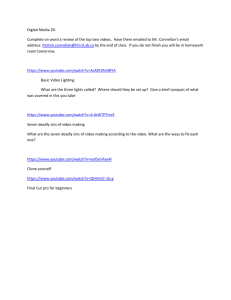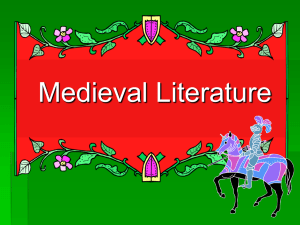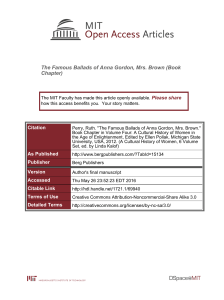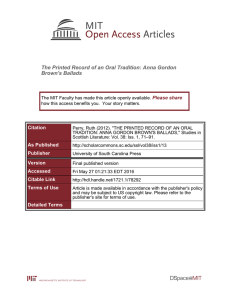medieval drama
advertisement
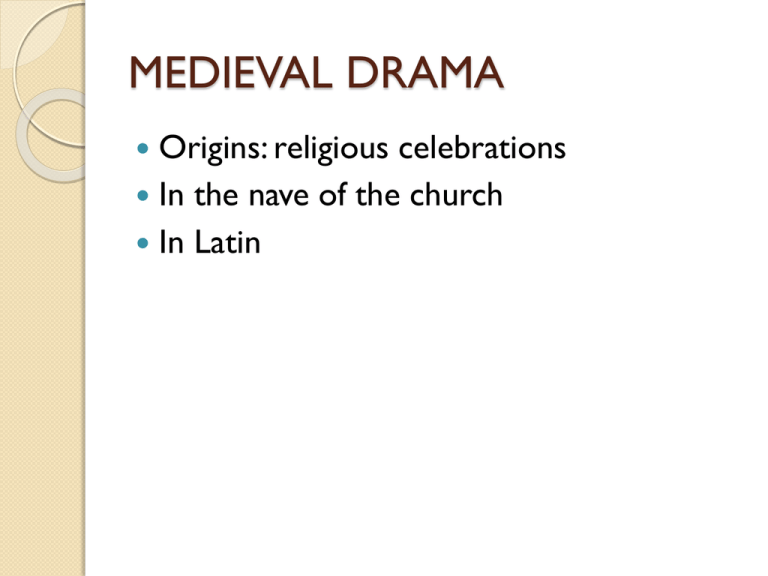
MEDIEVAL DRAMA Origins: religious celebrations In the nave of the church In Latin 13th-15th MYSTERY AND MIRACLE PLAYS shape to the sotory of the Bible Staged by members of trade guilds (Amateur actors) moving “pageants” (stage wagons) in town 15th century MORALITY PLAYS personifications of human vices and virtues (eg. Everyman) actors: members of a specific association under a lord’s patronage performances in lords’ mansions or travelling actors Introduction of interludes (disguise, comic elements, witty game of words) The Medieval Ballad (popular 13th-15th c.) Popular Story with rapid flashes Mixture of dialogue and narration Told and sung at the communal ring-dance Impersonal narrator 4-line stanzas (ABCB or couplets) Use of alliteration, assonance, similes and metaphors, symbols, hyperbole, etc.. Refrain, repetition, incrementation Simple language, conventional vocabulary Classification of ballads Ballads of magic : fairies, ghosts, witchcraft, etc. Ballads of love and tragedy Ballads of outlaws (e.g. Robin Hood) Border ballads (Scotland vs England) Giordano Dell’Armellina, Lord Randal: https://www.youtube.com/watch?v=MMR55HoeSG4 Scarborough fair https://www.youtube.com/watch?v=wiZJP_XLmrQ https://www.youtube.com/watch?v=-BakWVXHSug (with lyrics) (simon& garfunkel) Fabrizio De André, Geordie: https://www.youtube.com/watch?v=prIFn8ZZb3w In English: https://www.youtube.com/watch?v=_aFKuxBhoNI The Medieval Narrative Poem A story in verse Often a collections of stories Purpose: entertain and instruct Insight into individual characters Shift from a religious to a lay outlook Geoffrey Chaucer (1343?-1400) The father of English literature : Use of heroic couplet (rhymed iambic pentameters) Subject matter: new English society East midlands dialect (spread of standard English) The Canterbury Tales General Prologue + Epilogue + 24 Tales (of the 120 expected) Description of Pilgrim + his/her story From the Tabard Inn (Southwark)… …in spring… …to Becket’s shrine in Canterbury Characterisation Social/human types => no hierarchy Feudal types: all walks of life, except nobility and peasants (realism) “Showing” individuals (movement, relations, reactions => dynamism) Style narrative poem run-on lines heroic couplet concrete, realistic descriptions realism and allegory popular, learned and courtly traditions Variations in tone: Irony (awareness), Humour (laughter), Satire (contempt)

